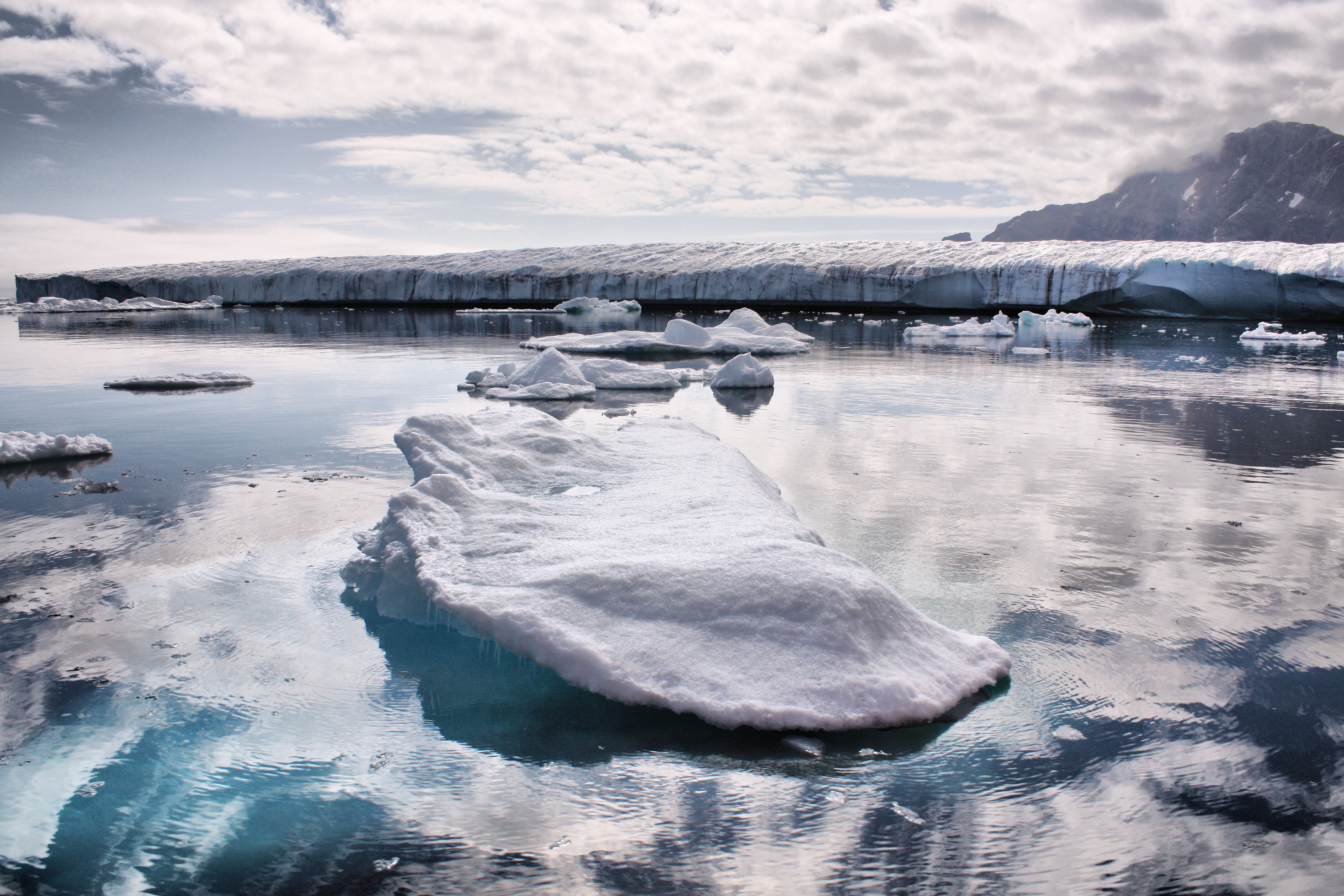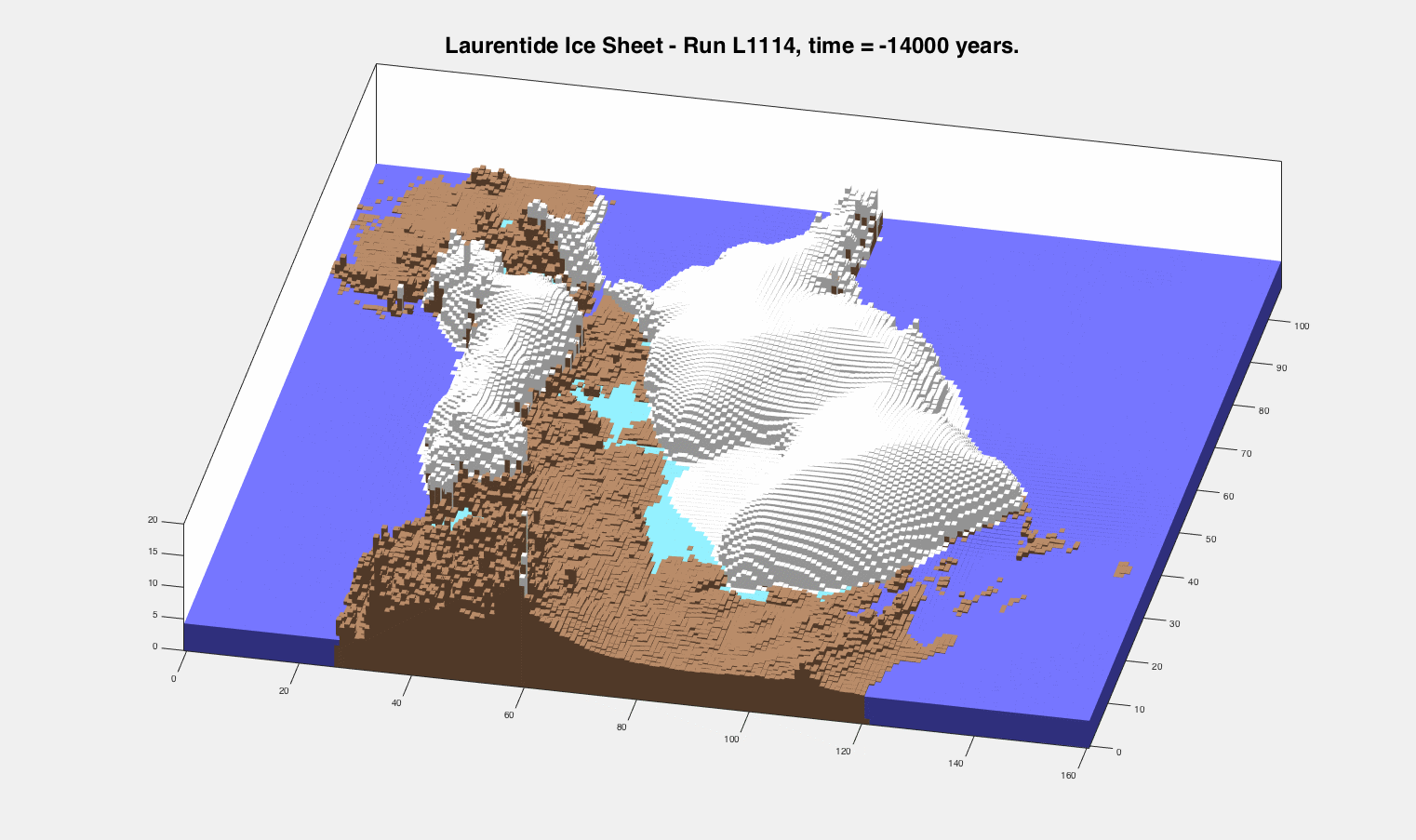Creating a model to predict how ice sheets will melt
Want to know what the melting process of the Greenland ice sheet would look like? You should dive into the past. A model that can reliably reconstruct the past, can also be used to predict the future. NESSC researcher Tijn Berends is working on such a model.
‘Ultimately, I want to find out what happened with the sea level and the ice sheets in the Pliocene, 3 million years ago’, says Tijn, who is a PhD candidate at the Institute for Marine and Atmospheric Research (IMAU) of Utrecht University. ‘That is an interesting time period, because it is similar to our current situation. The CO2-concentration was 400 to 450 ppm, just a bit higher than our current level, and the temperature was about 2 to 3 degrees Celsius higher. The sea level, however, was 5 to 20 meters higher.’ Since there is not much known about this era, it is important to find out more, says Tijn.
Testing the model
To reconstruct the situation in the Pliocene, Tijn will use an ice model of the IMAU. This model can tell a researcher how much ice there is in a certain area, how much will remain, and how it melts and shifts; all by calculating factors such as temperature and precipitation.
But before Tijn uses the model for his era of interest, he applies it to another time period: from the last glacial maximum, 21,000 years ago, until now. Much more is known from that time frame, so it’s perfect for testing and improving the model.

4.5 kilometers
During a few trials with the model, when Tijn just started his PhD, he found an interesting phenomenon: meltwater lakes. ‘Models usually don’t take those into account, but they are crucial.’
To explain, the researcher picks up a 3D print of the large ice sheet North America was covered with 20 thousand years ago. The ice sheet covered Canada with a 4.5 kilometer thick layer, pressing an enormous weight onto the earth crust, creating a huge valley of up to 800 meters depth. And that big bathtub is the key. Since an ice sheet is not static but melts at the edges, large amounts of water are released at the edges. And because of the bathtub, the water cannot run off.
Sudden drainage
‘The deep lakes that are formed at the edges of the ice sheet, influence the melting of the ice’, Tijn explains. ‘The ice sheet edges will float on top of the water, and floating ice generally melts faster. The result: the retreating ice sheet will retreat even faster.’
If you put that mechanism in the model , you can reconstruct the melting process of the North American ice sheet even more accurately. As it turns out, the ice sheet does not melt gradually, by meltwater flowing around it. No – the meltwater eats through the core of the ice sheet, splitting the ice sheet in two. ‘In a time frame of only one month, an enormous like was emptied in the ocean’, says Tijn. ‘The sea level rose two meters.’

This sudden drainage was never demonstrated with a model before. Other models suggest the ice sheet melted gradually by meltwater flowing around it. But field data seem to support Tijn’s model: at the mouth of the Hudson Bay, a big ravine is carved out in the sea floor.
Predicting the future
An interesting result – could we use something similar to predict Greenland’s future? ‘Well, before you can say things about the future, you should calibrate your model with something you already know. In theory, this model could be used for the Greenland ice sheet, but it has to be perfected. We first want to match it with a climate model, for instance.’
For Tijn, research into the past is as fascinating as the future. ‘Climate is such a complex system – while it’s based on only a few simple laws of nature. I think that is really interesting.’
Click here to read more interviews.

